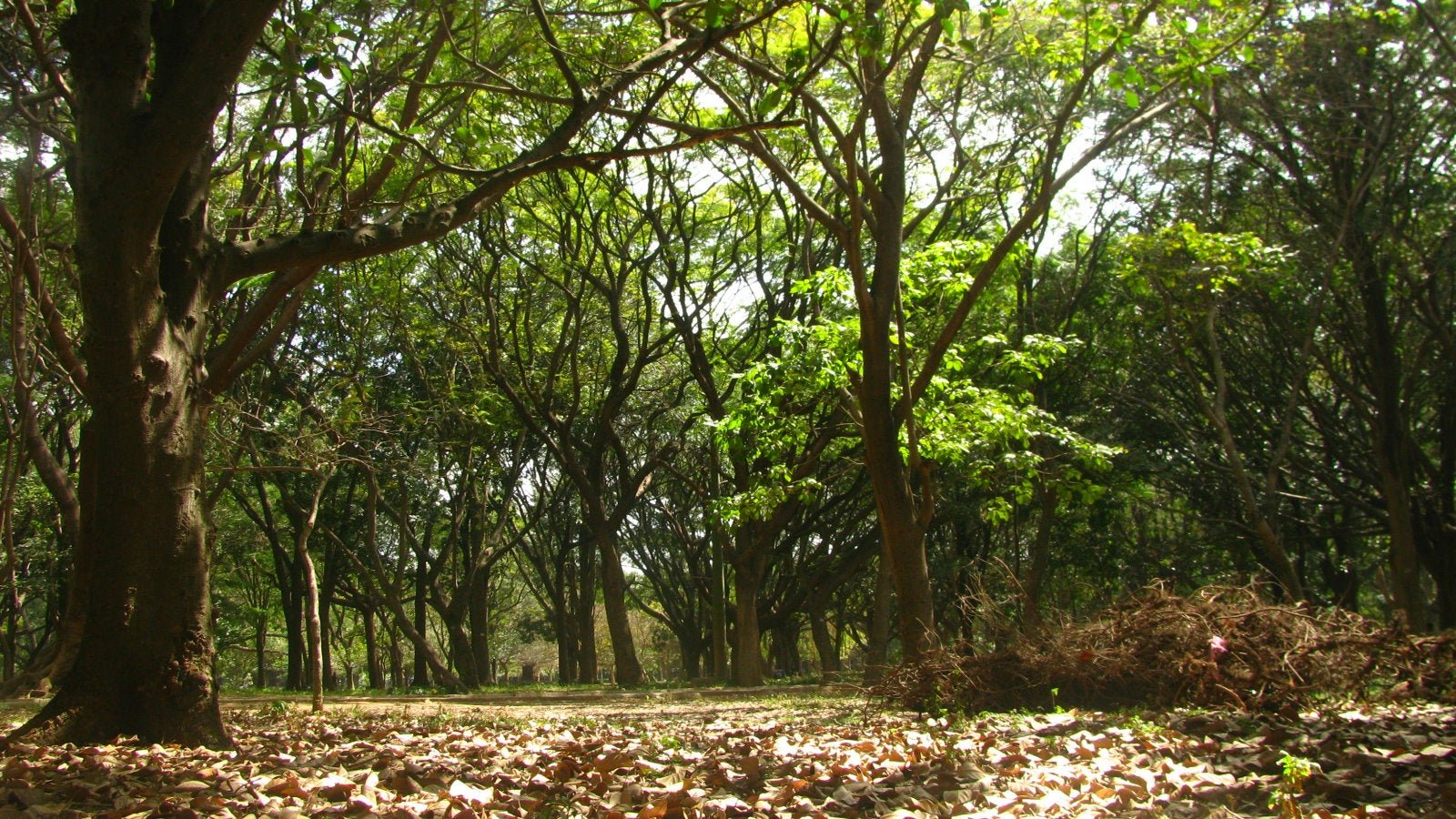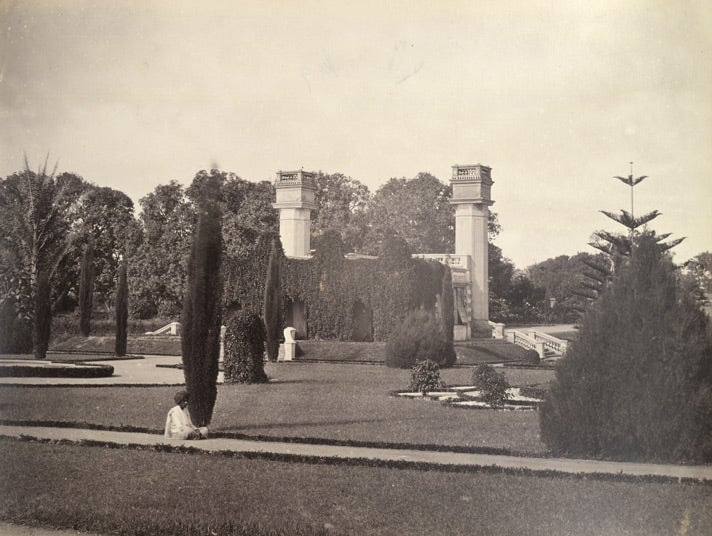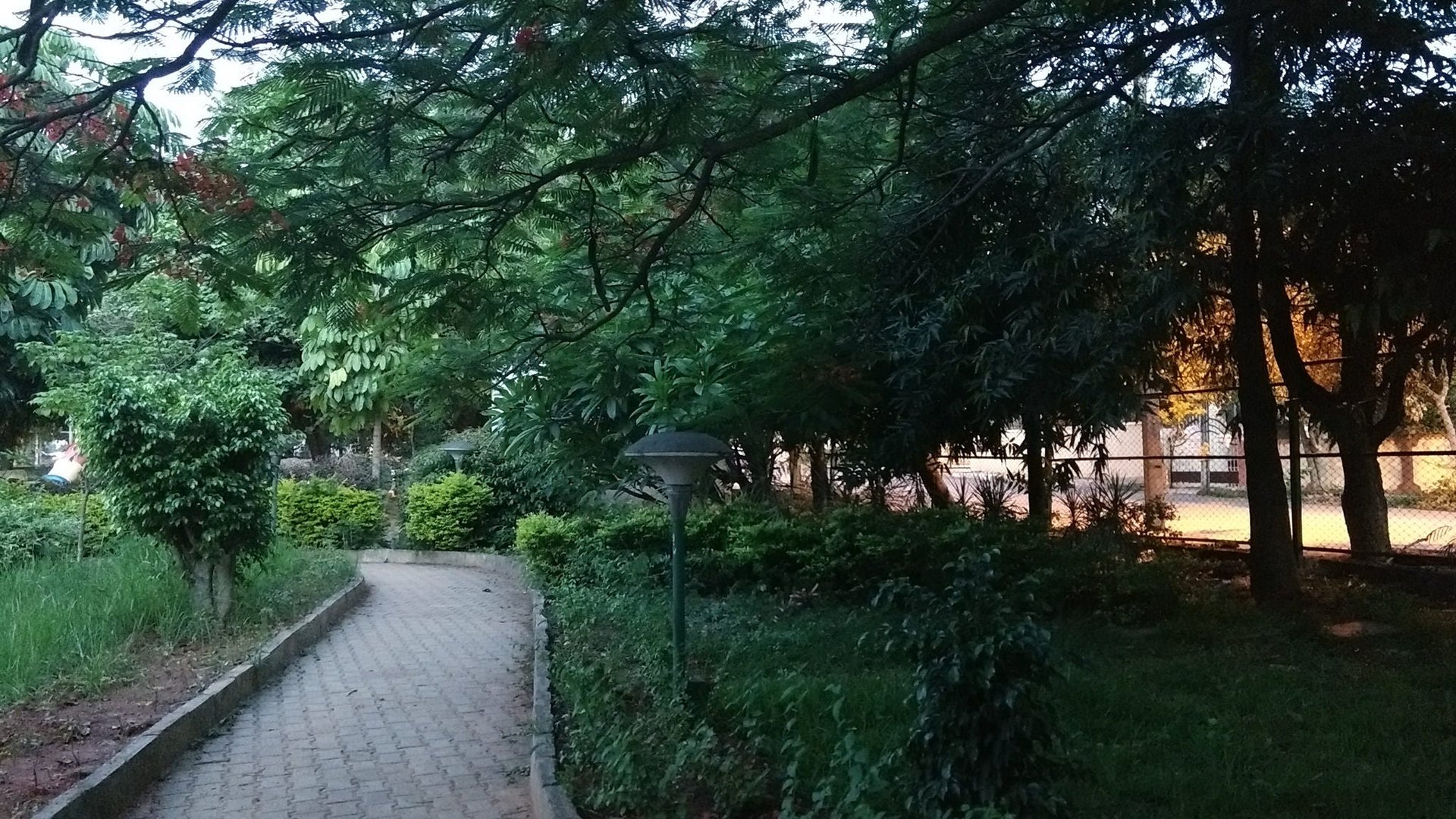In India’s Garden City, the flourishing middle class keeps the poor out of parks
On a recent Saturday morning, inside a verdant neighbourhood park, elderly men read newspapers on benches, while young parents watched over their children playing on the slides and swings. Walkers made the rounds on the cobblestone path, and in a corner, a mixed crowd was in the midst of vigorous exercises using colourful outdoor gym equipment.


On a recent Saturday morning, inside a verdant neighbourhood park, elderly men read newspapers on benches, while young parents watched over their children playing on the slides and swings. Walkers made the rounds on the cobblestone path, and in a corner, a mixed crowd was in the midst of vigorous exercises using colourful outdoor gym equipment.
This could have been any urban green space in the world. But within just a few minutes, a scene unfolded that was quintessentially Bengaluru (formerly Bangalore) in the 21st century.
Short bursts of a screeching sound filled the air. It wasn’t a bird; it was a man with a whistle. And as he blew into it, everyone in the park slowly began to make his or her way out. It was 10am, and in Bengaluru—the capital of India’s southern state of Karnataka—that’s when many neighbourhood parks close, re-opening only after 5pm, even on a Saturday.
It’s a curious policy that has been in place for several years, reportedly designed to keep out alcoholics, gamblers, and prostitutes, according to the Bruhat Bengaluru Mahanagara Palike (BBMP), the city’s civic body. But its enforcement across many of the BBMP’s 1,200-odd neighbourhood parks is a telling sign in the transformation of the city’s relationship with public green spaces, which have rapidly dwindled as Bengaluru has moved far away from its “garden city” roots.
The evolution of parks
As early as the 17th century, Bangalore was described as a city of lakes and gardens, according to Nature in the City by Harini Nagendra, a professor of sustainability in the city’s Azim Premji University. In her book, Nagendra details the rich history of green spaces in Bangalore, starting from the extensively cultivated kitchen gardens that supplied vegetables to the very first landscaped gardens designed in the 18th century by rulers Hyder Ali and Tipu Sultan.
After the British defeated Tipu Sultan and took control of Bangalore in 1799, they presided over a new era of park development, turning the city’s oldest garden, Lal Bagh, into a horticultural centre to encourage the production of exotic fruits and vegetables. At the same time, they launched the annual flower show, and British and Indian visitors began flocking to the garden to admire both its landscape and its growing collection of exotic animals, which included an orangutan, a black panther, and a once-rabid tiger, Nagendra writes.

This, then, marked the early stages of Bengaluru’s changing relationship with public green spaces, which were starting to be formalised as places for recreation.
After Independence, the city experienced two other waves of park creation, one between the 1970s and 1990s, and one after the 1990s, which created several new neighbourhood parks, the management of which would often be handed over to private companies or residents’ welfare associations (RWAs). But by this time, Bangalore was also on fast track towards becoming India’s Silicon Valley, and the resulting urbanisation and proliferation of glass-and-steel buildings started to swallow up large swathes of open land. In 1973, the city’s vegetation cover was 68.27%; by 2013, it had fallen to under 15%, according to a study by researchers at the city’s Indian Institute of Science (IISc). They also found that for every seven persons in the city, there was just one tree left.
Green spaces today
Today, the BBMP’s horticultural department lists over 1,200 neighbourhood parks (pdf) on its website, amounting to a total area of nearly two sq km. Bengaluru spans 2,196 sq km, meaning the parks account for less than 0.1% of the city’s total area.

And the green spaces that remain are nothing like they used to be. Instead, neighbourhood parks are often gated and entirely landscaped, with paved walking paths, designated play areas for young children, and exercise equipment for senior citizens. On paper, it all sounds great, but the reality is that these spaces are increasingly restricted to certain kinds of city residents—usually middle- or upper-middle class—and exclude those whose lifestyles don’t fit the bill.
“Green spaces are becoming commoditised and recreation-focused; they’re not really commons anymore,” Nagendra tells Quartz. ”Many of these parks would have had one side that was a playground where kids played cricket or just tossed a ball around. And those I hardly see (now)… Where do kids go to toss a ball around or play cricket?” she adds.
To add to this are the rules and regulations that now govern public green spaces in Bengaluru, which often include prohibitions against “indecent” behaviour—warning couples against public displays of affection, or even sitting together in some cases—and the very specific entry timings. Most neighbourhood parks open from around 5am until 9am or 10am, catering to crowds of morning walkers, before being locked up until it’s time for the evening walkers to come in. RWAs have sometimes attributed this to a lack of funds for round-the-clock security, but the consequences are far-reaching.
“We just can’t afford to have security guards all the time, so during less-visited hours you say that people can’t enter. But the flip side is when you do that, you exclude so many people—mothers of young children, for instance,” Nagendra says. “There’s absolutely no place where you can take them unless you have the money to pay.”
This reflects what some academics and activists have described as the privatisation of public spaces, which they say is the result of the sizable influence of Bengaluru’s middle class: a product of the city’s information technology (IT) boom.
“The main reason why (parks are) being regulated is that the BBMP has a policy of ensuring that there are parks for people who organise themselves, which is the middle class,” says Leo Saldanha, coordinator of Environment Support Group, an environmental and social justice trust in Bengaluru. “Their notion (is) that parks have to have gardens, there needs to be a walking path, and a designated zone for kids to play. But there is no unstructured space.”
In a 2006 essay titled Social Municipalism and the New Metropolis, the academic Janaki Nair showed how growing middle-class political engagement in Bengaluru had changed the way the city worked. She used the example of Cubbon Park, the over 100-year-old public park located in the heart of the city. The 1.2 sq km park was established in 1870 and had a rich history as the site of demonstrations and rallies, and as a space frequented by members of different social classes. But things started to change by the late 1980s and 1990s, as middle-class users began to push for the beautification of the park and a ban on public rallies in the space.
“By 1998, this public utility had been more or less ‘privatised’ with the installation of chain link fences and large gates, which, though ‘aesthetically pleasing,’ kept all, except the jogger and walker, from the use of the park at certain hours,” Nair writes.

And this evolution in access to green public space coincided with another important change in Bengaluru.
The new Bengaluru
Following the IT boom came the rise of gated residential communities, which offer wealthier residents access to their own green spaces and play areas, equipped with wide walking paths and benches to sit on. Often advertised as an oasis away from the chaos of the city, these complexes became increasingly popular with middle class and upper middle class residents even as they widened the class divide in the city.
“(The middle classes) create their own private amenities and the city becomes a private space. It was not meant to be like that,” Saldanha says. With the spread of gated communities, many privileged residents don’t have to depend on public parks. But the poor planning of local authorities and the dominance of middle-class interests has meant that the people kept out of green spaces are often those who need them the most, especially children from low-income families.
“The impact is that most people who should be using the park cannot because they can’t access it,” he says. “The real health impact here is that kids have nowhere to play. We have not created new playgrounds, open spaces are not available.”
Limiting access to public parks does have consequences for adults, too, including those who come from more privileged backgrounds. The lack of open spaces and parks that they can access during their convenient hours has forced many locals to rely on gyms for fitness, and these have mushroomed all across the city in recent years.
But most importantly, restricting access to public green spaces has changed many residents’ relationship with the city itself.
“Already cities are becoming atomised, and nature is one of the ways you can connect to others. But if you’re constraining your connection with nature in this way, I think you’ll definitely feel emotionally stunted and incapable of connecting with your community,” says Nagendra.
Long-time residents of Bengaluru recall the city as a diverse, multicultural place where people from all walks of life would frequent the same green spaces. Today, it’s just not the same.
“I grew up in a neighbourhood where every person in that street had a different profession and they came from all sorts of class, caste and religious backgrounds. And so we had a very rich appreciation of what it is to be Indian,” recalls Saldanha. “We used to play in open spaces and parks. Now we don’t have that.”
Feature image by Soham Banerjee on Flickr, licensed under CC BY 2.0.